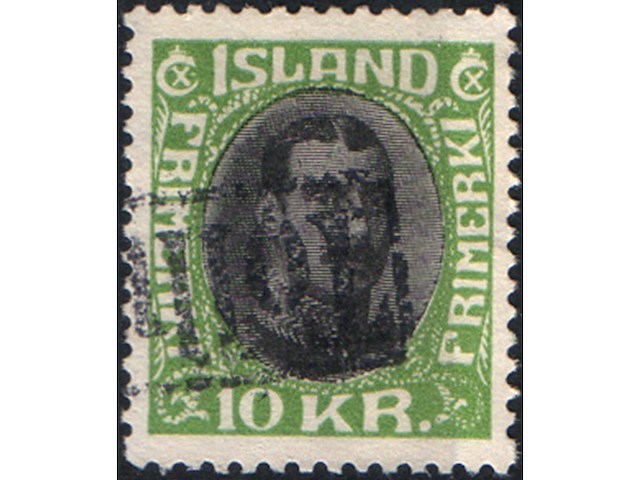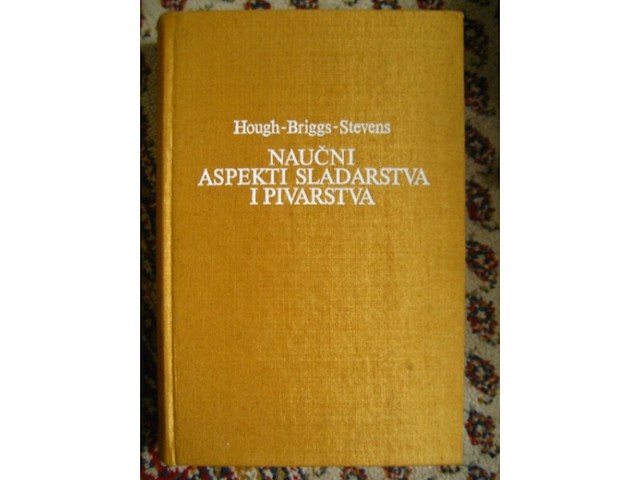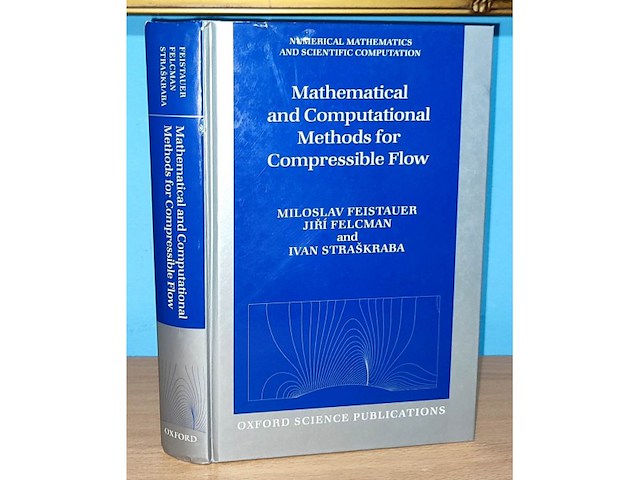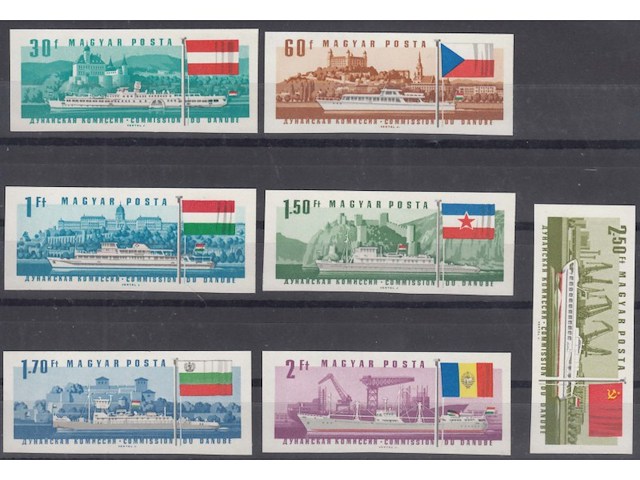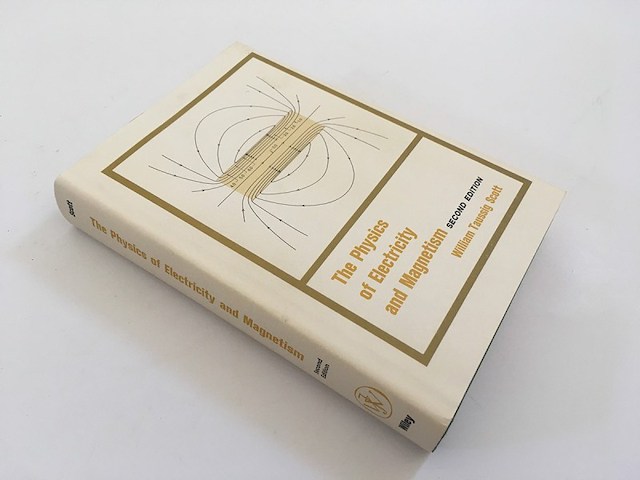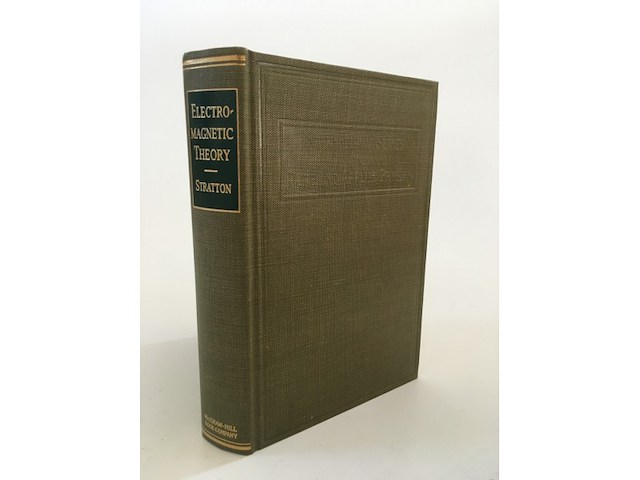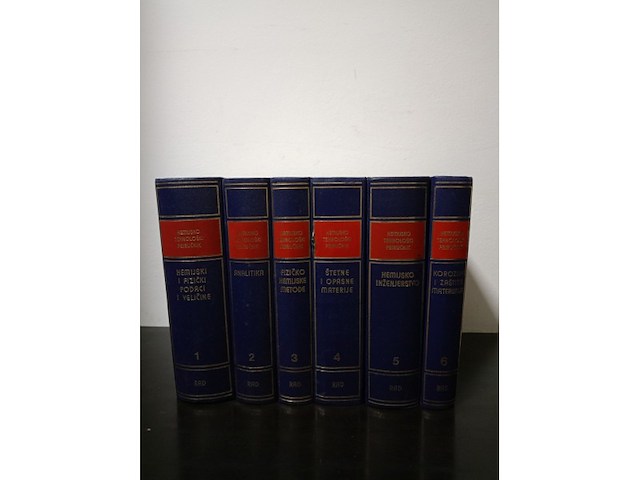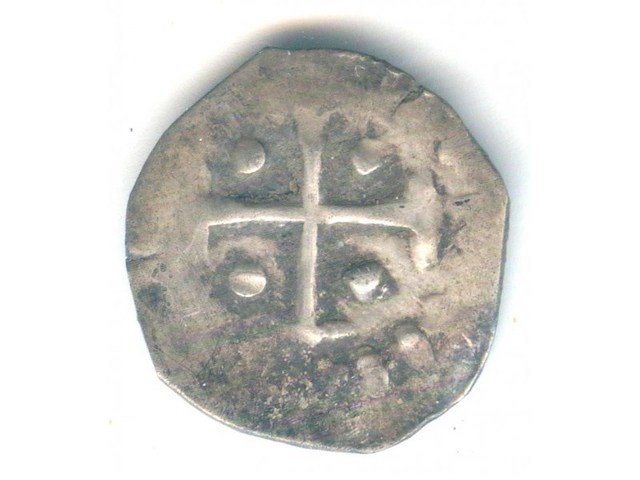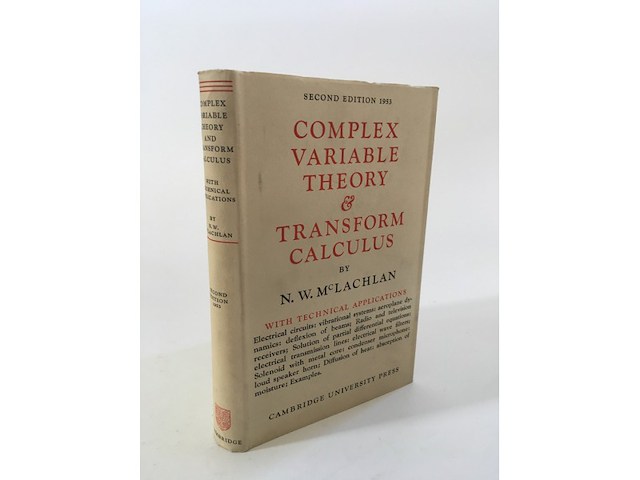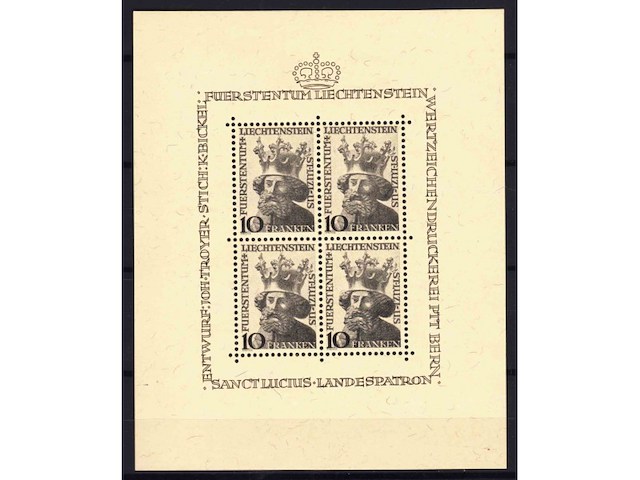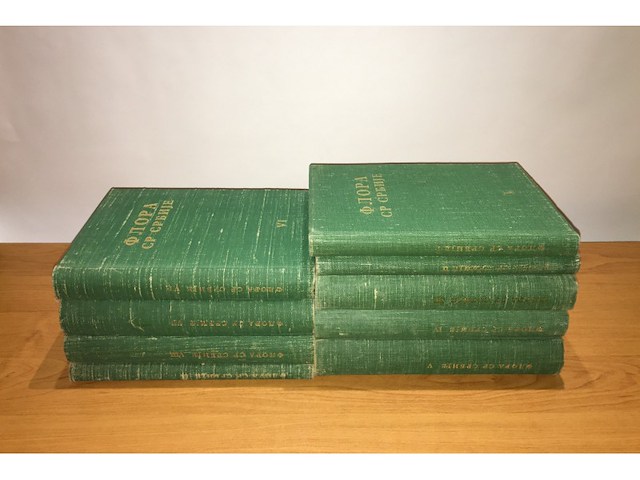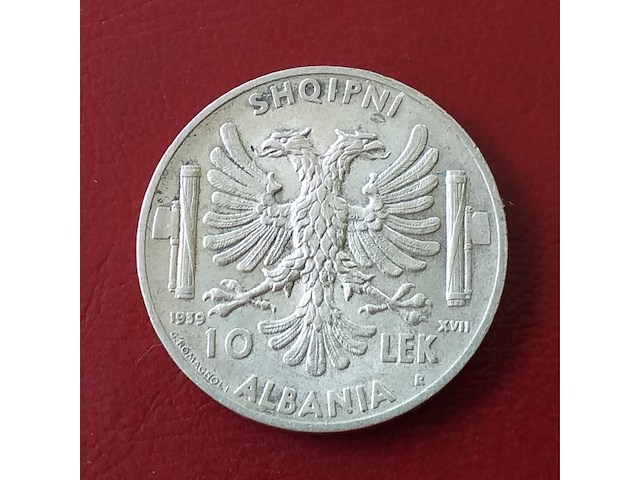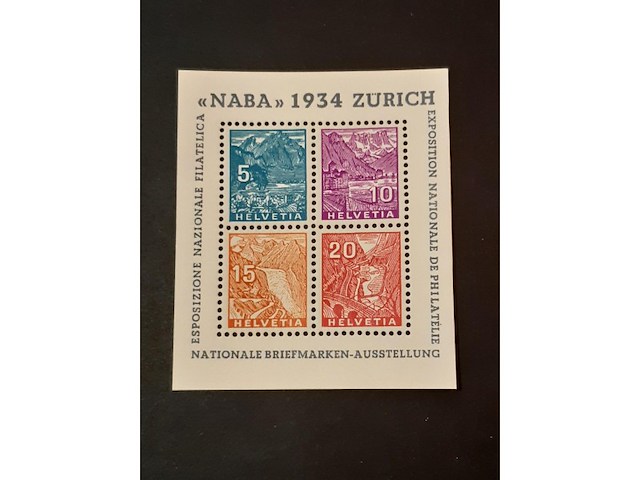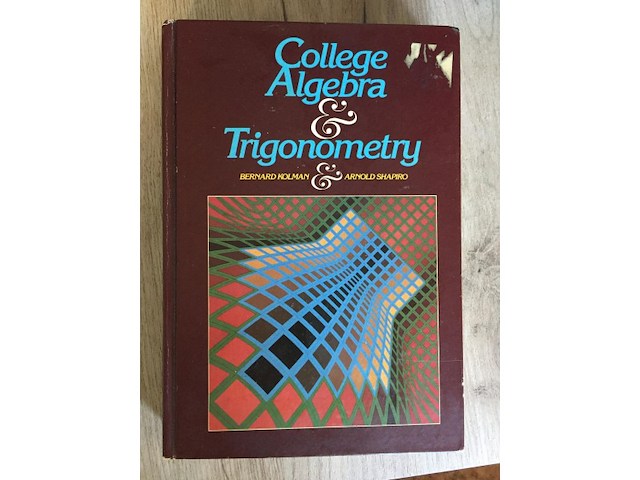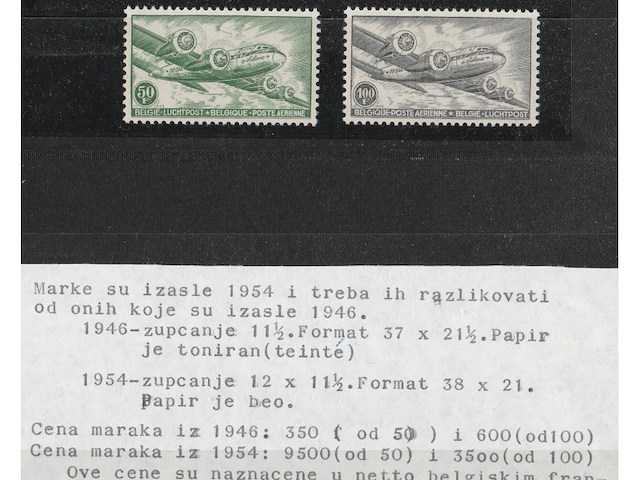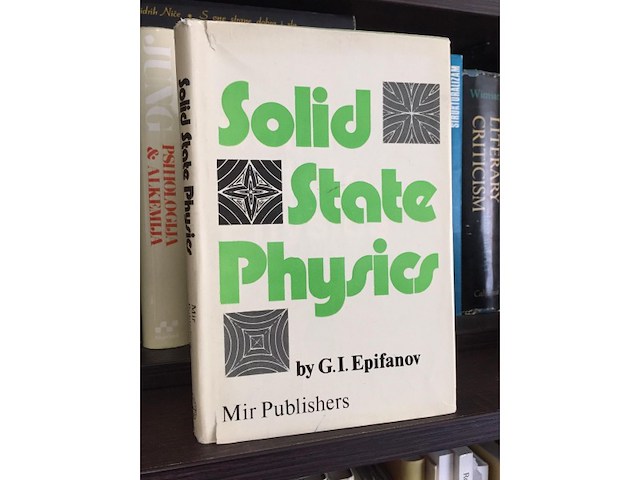Pratite promene cene putem maila
- Da bi dobijali obaveštenja o promeni cene potrebno je da kliknete Prati oglas dugme koje se nalazi na dnu svakog oglasa i unesete Vašu mail adresu.
1-25 od 87 rezultata
Režim promene aktivan!
Upravo ste u režimu promene sačuvane pretrage za frazu .
Možete da promenite frazu ili filtere i sačuvate trenutno stanje
-
Kolekcionarstvo i umetnost chevron_right Kolekcionarstvo
Stanje kao na fotografijama - dobijate prikazano
-
Kolekcionarstvo i umetnost chevron_right Kolekcionarstvo
***************************************************************************************************************************************************************************************************************************** Dragi filatelisti, kupci, zainteresovani, hvala Vam što čitate ove redove, pogledajte moju kompletnu ponudu na Limundu, i na Kupindu gde imam prave poslastice i za najozbiljnije filateliste... Marke su pretežno idealno očuvane, ali moj je savet, ipak pre kupovine proverite navedeno stanje. Ukoliko imate pitanja u vezi predmeta, molim Vas pišite mi, stojim Vam na raspolaganju... Pri opisu koristim ove međunarodne simbole: ** čisto sa gumom (**) čisto bez gume * čisto sa falcom i gumom (*) čisto sa falcom bez gume -o- žigosano sa gumom (-o-) žigosano bez gume F falc kod žigosanih P perforirane marke (npr. u vidu slova itd) Pro ispitana marka od ovlaštenog stručnjaka FDS (PPD)pečat prvog dana izdavanja FDC koverat sa markicama i pečatom prvog dana izdavanja G Gudlin-ova vrednost(koeficijent) klasificira žig Vredi baciti pogled, malo surfovati, sačuvati putanju i s vremena na vreme ponovo pregledati, jer moju ponudu neprestano obnavljam... Želim Vam uspešno licitiranje-kupovinu, uživajte u svojoj kolekciji obogaćenoj kupljenim markama od mene, dugo u sreći i zdravlju... *****************************************************************************************************************************************************************************************************************************
58966) Mathematical and Computational Methods for Compressible Flow , Miloslav Feistauer , Jiri Felcman, Ivan Straškraba , Clarendon press Oxford 2003 ; Oxford Science Publications This book is concerned with mathematical and numerical methods for compressible flow. It aims to provide the reader with a sufficiently detailed and extensive, mathematically precise, but comprehensible guide, through a wide spectrum of mathematical and computational methods used in Computational Fluid Dynamics (CFD) for the numerical simulation of compressible flow. Up-to-date techniques applied in the numerical solution of inviscid as well as viscous compressible flow on unstructured meshes are explained, thus allowing the simulation of complex three-dimensional technically relevant problems. Among some of the methods addressed are finite volume methods using approximate Riemann solvers, finite element techniques, such as the streamline diffusion and the discontinuous Galerkin methods, and combined finite volume - finite element schemes. The book gives a complex insight into the numerics of compressible flow, covering the development of numerical schemes and their theoretical mathematical analysis, their verification on test problems and use in solving practical engineering problems. The book will be helpful to specialists coming into contact with CFD - pure and applied mathematicians, aerodynamists, engineers, physicists and natural scientists. It will also be suitable for advanced undergraduate, graduate and postgraduate students of mathematics and technical sciences. hard cover, size 16 x 24 cm , 535 pages
-
Kolekcionarstvo i umetnost chevron_right Kolekcionarstvo
stanje kao na slici
Lepo ocuvano Kao na slikama Oscar Kempthorne 1952 FIRST EDITION Wiley; First Edition (January 1, 1952) Language : English Hardcover : 631 pages info (o drugom izdanju, ne mogu da nađem o prvom, ali valjda će biti dovoljno za uvid u knjigu) Design and Analysis of Experiments, Volume 1, Second Edition provides a general introduction to the philosophy, theory, and practice of designing scientific comparative experiments and also details the intricacies that are often encountered throughout the design and analysis processes. With the addition of extensive numerical examples and expanded treatment of key concepts, this book further addresses the needs of practitioners and successfully provides a solid understanding of the relationship between the quality of experimental design and the validity of conclusions. This Second Edition continues to provide the theoretical basis of the principles of experimental design in conjunction with the statistical framework within which to apply the fundamental concepts. The difference between experimental studies and observational studies is addressed, along with a discussion of the various components of experimental design: the error-control design, the treatment design, and the observation design. A series of error-control designs are presented based on fundamental design principles, such as randomization, local control (blocking), the Latin square principle, the split-unit principle, and the notion of factorial treatment structure. This book also emphasizes the practical aspects of designing and analyzing experiments and features: Increased coverage of the practical aspects of designing and analyzing experiments, complete with the steps needed to plan and construct an experiment A case study that explores the various types of interaction between both treatment and blocking factors, and numerical and graphical techniques are provided to analyze and interpret these interactions Discussion of the important distinctions between two types of blocking factors and their role in the process of drawing statistical inferences from an experiment A new chapter devoted entirely to repeated measures, highlighting its relationship to split-plot and split-block designs Numerical examples using SAS® to illustrate the analyses of data from various designs and to construct factorial designs that relate the results to the theoretical derivations Design and Analysis of Experiments, Volume 1, Second Edition is an ideal textbook for first-year graduate courses in experimental design and also serves as a practical, hands-on reference for statisticians and researchers across a wide array of subject areas, including biological sciences, engineering, medicine, pharmacology, psychology, and business.
-
Kolekcionarstvo i umetnost chevron_right Kolekcionarstvo
-
Autor: William Taussig Scott Izdavač: John Wiley & Sons (New York, London, Sydney) Broj strana: 703 Povez: tvrd + omot Visina: 24 cm Stanje: ★★★★★ Predmetne odrednice: fizika elektriciteta i magnetizma, elektricitet, magnetizam, polja, provodnici, kalemi, elektrostatika, magnetno i električno polje, naizmenična struja, radijacija
Izdavač: McGraw-Hill Book Company, Inc. (New York and London) Zbirka: Pure & Applied Physics Broj strana: 615 Povez: tvrd Visina: 24 cm Stanje: ★★★★★ Prvo izdanje, sjajno očuvano, ne deluje ni da je čitana. Detaljan sadržaj na slikama. O autoru https://en.wikipedia.org/wiki/Julius_Adams_Stratton Predmetne odrednice: elektromagnetizam, teorija elektromagnetizma, cilindrična polja, funkcija talasa, elementarni talasi i čestice, jednačina talasa, radijacija, skalarni talasi, granični uslovi, maksvel, maksvelove jednačine, magnetostatika, protok energije, elektrostatično polje, dielektrik
PRIRODA JUGOSLAVIJE – Čedomil Šilić, Radomir Lakušić, Ljubomir Mišić BILJKE JUGOSLAVIJE 1-6 KOMPLET težina oko 4kg 1. ATLAS DRVEĆA I GRMLJA Čedomil Šilić, 1990. četvrto izdanje 2. ŠUMSKE ZELJASTE BILJKE Čedomil Šilić, 1990. četvrto izdanje 3. PLANINSKE BILJKE Radomir Lakušić, 1990. treće izdanje 4. ENDEMIČKE BILJKE Čedomil Šilić, 1990. treće izdanje 5. UKRASNO DRVEĆE I GRMLJE Čedomil Šilić, 1990. prvo izdanje 6. LIVADSKE BILJKE Ljubomir Mišić i Radomir Lakušić, 1990. prvo izdanje Izdavači: IP `Svetlost` - Sarajevo; Zavod za udžbenike i nastavna sredstva – Beograd, 1990. Tvrd povez, mnoštvo fotografija u koloru i crteža u crno-beloj tehnici težina oko 4 kg
Autor: Fred Punzo Izdavač: Springer, 2000. Tvrd povez, 230 str. Desert Arthropods: Life History Variations This book is a basic account of the life cycles and life history strategies of the major groups of desert arthropods. It covers a wide variety of topics including an overview of major adaptations in desert arthropods, characteristic features of deserts, a comprehensive review of life history theory, and a detailed description of embryonic and postembryonic development. The book also provides an in-depth discussion of the life history traits in these animals including development time, growth rates and patterns, age and size at maturity, size and number of offspring, sex ratios, costs associated with reproduction and longevity, and explains how these traits are inextricably connected by various trade-offs including those between current reproduction and survival, current and future reproduction, and between number, size and sex of offspring. Finally, the relationship between behavioral ecology and life history traits is discussed. POGLEDAJTE I OSTALE KNJIGE KOJE PRODAJEM KLIKNITE NA LINK http://www.kupindo.com/pretraga.php?Pretraga=&CeleReci=1&Prodavac=madena&Grupa=1&sSort=cena&sSmer=DESC 100
HEMIJSKO TEHNOLOŠKI PRIRUČNIK Komplet sadrži: 1. Hemijski i fizički podaci i veličine, br. str. 955. 2. Analitika, br. str. 637. 3. Fizičkohemijske metode, br. str. 501. 4. Štetne i opasne materije, br. str. 670. 5. Hemijsko inženjerstvo. br. str. 805. 6. Korozija i zaštita materijala, br. str. 484. Izdavač: Rad, Beograd Povez: tvrd Grafikoni, fotografije, tabele
-
Kolekcionarstvo i umetnost chevron_right Kolekcionarstvo
izuzetno retko kod nas.. Kovanica je na aversu sa strane ostecena, jer je ko zna kada proveravana ili dosla u dodir sa nekom kiselinom. revers ocuvan veka lepo.. U pitanju je KM# 77.2 > type 2 Precnik po mom subleru 39,6mm, i po mojoj vagici 22.1g Vrednost vani dostize preko 300-500 dolara cks1
Autor: N. W. McLachlan Izdavač: Cambridge University Press Broj strana: 388 Povez: tvrd + omot Visina: 23 cm Stanje: ★★★★★ The purpose of this book is to give a treatment of the so-called operational method and to illustrate its application to problems in various branches of technology. It is written primarily for technologists who use mathematics in solving technical problems in industrial and applied research work, and the treatment is sufficiently rigorous for their needs. The theory of the complex variable and of transform calculus occupy the first half of the book. A further third of the book describes the application of this theory to problems arising in electrical circuits; vibrational systems; aeroplane dynamics; the deflexion of beams; radio and television receivers; the solution of partial differential equations; electrical transmission limes; electrical wave filters; solenoids with metal cores; condenser microphones; loud speaker horns and the absorption of moisture. Predmetne odrednice: kompleksne varijable, Beselova funkcija, Melinova inverzna formula, električna kola, radio i tv risiveri, televizija, transmisija, struja, toplota, matematički dokazi
-
Kolekcionarstvo i umetnost chevron_right Kolekcionarstvo
-
FLORA SAVEZNE REPUBLIKE SRBIJE 1-9 Priredili - Mladen Josifović, Leposava Stjepanović, Momčilo Kojić, Nikola Diklić, Milovan Gajić Izdavač - Srpska akademija nauka i umetnosti - Odeljenje prirodno-matematičkih nauka, Beograd Godina - 1970, 1972, 1973, 1974, 1975, 1976, 1977 X + 326 + X + 294 + XVIII + 600 + XVI + 584 + XX + 640 + XVI + 600 + XX + 650 + XVIII + 516 + XVI + 256 (ukupno 4610) strana 25 cm Povez - Tvrd Stanje - Kao na slici, tekst bez podvlačenja Ako Vas nešto zanima, slobodno pošaljite poruku. Flore de la Republique Socialiste de Serbie
-
Kolekcionarstvo i umetnost chevron_right Kolekcionarstvo
Kao na slikama retko tiraž: 175.000 komada
-
Kolekcionarstvo i umetnost chevron_right Kolekcionarstvo
Prodajem album sa ponistenim markama, blokovima i karnetima.
-
Kolekcionarstvo i umetnost chevron_right Kolekcionarstvo
Stanje kao na fotografijama - dobijate taj blok. Odlično stanje, sumnjive boje???
-
Kolekcionarstvo i umetnost chevron_right Kolekcionarstvo
odlicno
Lepo očuvano 1981 First edition Introduction to Algebra and Trigonometry 1st Edition - January 1, 1981 Authors: Bernard Kolman Arnold Shapiro Introduction to Algebra and Trigonometry provides a complete and self-contained presentation of the fundamentals of algebra and trigonometry. This book describes an axiomatic development of the foundations of algebra, defining complex numbers that are used to find the roots of any quadratic equation. Advanced concepts involving complex numbers are also elaborated, including the roots of polynomials, functions and function notation, and computations with logarithms. This text also discusses trigonometry from a functional standpoint. The angles, triangles, and applications involving triangles are likewise treated. Other topics include analytic geometry, conic sections, and use of a coordinate system to prove theorems from plane, and matrix operations and inverses. This publication is valuable to students aiming to gain more knowledge of the fundamentals of mathematics. Algebra (arap. الجبر „al-gebr“ ponovno sastavljanje razdvojenih delova, sjedinjavanje[1]) je grana matematike koja istražuje odnose i svojstva brojeva pomoću znakova. Geneza naziva vodi do knjige arapskog matematičara Al Horezmija Hisab al džabr val mukabala što se u slobodnijem prevodu može biti Knjiga o svođenju i dvostrukom oduzimanju. Postupak se prvo odnosio na uređivanje leve i desne strane kod jednačina ali je kasnije, razvojem matematike, značajno proširen. Izvorno se pod „algebrom“ podrazumevala teorija „algebarskih“ jednačina, u kojima su pomoću „algebarskih“ računskih operacija (sabiranje, oduzimanje, množenje, deljenje itd.) povezane poznate i nepoznate veličine.[2] Algebra je ujedinjavajuća nit skoro svih oblasti matematike.[3] Kao takva, ona obuhvata sve od rešavanja elementarnih jednačina do studiranja apstrakcija kao što su grupe, prstenovi, i polja. Osnovni delovi algebre se nazivaju elementarnom algebrom; apstraktniji delovi se nazivaju apstraktnom algebrom ili modernom algebrom. Elementarna algebra se generalno smatra neophodnim za svako istraživanje matematike, nauke ili inženjerstva, kao i za primene u oblastima poput medicine i ekonomije. Apstraktna algebra je glavna oblast napredne matematike, koju uglavnom proučavaju profesionalni matematičari. Danas pojam algebre označava i opštiju teoriju matematičkih struktura, u kojoj se posebno istražuju strukturne jednakosti između tako različito usmerenih oblasti kao što su teorija brojeva, geometrija ili algebra u tradicionalnom smislu. Elementarna algebra se razlikuje od aritmetike po upotrebi apstrakcija, kao što je korištenje slova za označavanje brojeva koji su bilo nepoznati ili mogu da imaju mnoge vrednosti.[4] Na primer, u x + 2 = 5 {\displaystyle x+2=5} slovo x x je nepoznata, ali se zakon inverzija može koristiti za otkrivanje te vrednosti: x = 3 {\displaystyle x=3}. U E = mc2, slova E {\displaystyle E} i m m su promenljive, a slovo c {\displaystyle c} je konstanta, brzina svetlosti u vakuumu. Algebra daje metode za rešavanje jednačina i izražavanje formula koje su mnog lakše (za one koji znaju kako da ih koriste) od starijeg metoda pisanja svega rečima. Važne algebarske strukture su, recimo, grupe, prsteni, tela i asocijacije. Sve tvorevine koje pokazuju neku određenu strukturu nazivaju se „modeli“ ove strukture. Rezultati na koje se smera istraživanjima apstraktnih struktura pokatkad važe i za njihove modele. Nadovezujući se na Mathematical Analysis of Logic (1847) Džordž Bula, algebarska istraživanja su postala značajna i za formalnu logiku. Važnu ulogu tu igraju posebno „bulovske asocijacije“ ili „bulovske algebre“. Pored algebarskih struktura, govori se još i ο „strukturama uređenja“ i „topološkim strukturama“. Reč algebra se isto tako koristi na nekoliko specijalizovanih načina. Specijalna vrsta matematičkog objekta u apstraktnoj algebri se naziva „algebra“, i ta reč se koristi, na primer, u frazama linearna algebra i algebarska topologija. Matematičar koji se bavi istraživanjem algebre se naziva algebrista. Trigonometrija (grč. τριγονο — trougao i grč. μετρειν — merenje, mera),[1][2] deo je matematike i geometrije koji se bavi izračunavanjem elemenata trougla pronalaženjem zakonitosti zavisnosti u njihovim odnosima, kao i uspostavljanjem funkcija uglova koje ih definišu.[3] Prvobitno je isključivo izračunavala vrednosti elemenata trougla. Njen prvobitni cilj je danas prevaziđen i primena trigonometrije na osnovu izračunavanja trigonometrijskih funkcija, van svakog posmatranja trougla, učinila je od trigonometrije značajnu oblast matematike i geometrije.[4] Ona je od ogromnog praktičnog značaja u različitim oblastima kao što su inženjerstvo, arhitektura, geodezija, navigacija i astronomija. Trigonometrijske funkcije imaju posebno važnu ulogu u matematičkoj analizi i koriste se za predstavljanje talasa i drugih periodičnih pojava. Poreklo[uredi | uredi izvor] Prvi koreni trigonometrije su nađeni u zapisima iz Egipta i Mesopotamije. Tamo je nađena vavilonska kamena ploča (oko 1900—1600. p. n. e.) koja sadrži probleme sa relacijama koje odgovaraju savremenom sec 2 {\displaystyle \sec ^{2}}. Egipatski papirus Rind (oko 1650. p. n. e.) sadrži probleme sa odnosima stranica trougla primenjenim na piramide. Niti Egipćani, niti Vavilonci nisu imali naše shvatanje mere ugla, a relacije tog tipa su smatrali osobinama trouglova, pre nego samih uglova. Važan napredak napravljen je u Grčkoj u vreme Hipokrata iz Kiosa (Elementi, oko 430. p. n. e.), koji je proučavao odnose između centralnih uglova kružnice i tetiva. Hiparh je 140. p. n. e. napravio tablicu tetiva (prvu preteču savremenih sinusnih tablica). Menelaj iz Aleksandrije (Sferna geometrija, oko 100. nove ere) je prvi koristio sferne trouglove i sfernu trigonometriju. Ptolemej (Almagest, oko 100. n. e.) je napravio tablicu tetiva uglova između 0,5° i 180° sa intervalom od pola stepena. On je takođe istraživao trigonometrijske identitete. Grčku trigonometriju su dalje razvijali Hindu matematičari koji su ostvarili napredak razmeštanjem tetiva preuzetih od Grka na polu tetive kruga sa datim radijusom, tj. ekvivalentom našoj sinusnoj funkciji. Prve takve tablice bile su u Sidhantasu (sistem za astronomiju) u IV i V veku ove ere. Poput brojeva, moderna trigonometrija nam dolazi od Hindu matematičara preko arapskih matematičara. Prevodi sa arapskog na latinski jezik tokom XII veka uveli su trigonometriju u Evropu. Osoba odgovorna za „modernu“ trigonometriju bio je renesansni matematičar Regiomontanus. Od doba Hiparha, trigonometrija je bila jednostavno alat za astronomska izračunavanja. Regiomontanus (De triangulis omni modis, 1464; publikovano 1533) bio je prvi koji je trigonometriju tretirao kao subjekt po sebi. Dalji napredak su napravili Nikola Kopernik u De revolutionibus orbium coelestium (1543) i njegov učenik Retikus. U Opus palatinum de trianulis (kompletirao njegov učenik 1596), Retikus je ustanovio upotrebu šest osnovnih trigonometrijskih funkcija, praveći tablice njihovih vrednosti, i držeći se ideje da te funkcije predstavljaju odnose stranica u pravouglom trouglu (radije nego tradicionalne polu-tetive krugova). Moderna analitička geometrija datira od vremena Fransoe Vijeta, koji je uradio tablice šest funkcija do najbliže minute (1579). Vijeta je takođe izveo formulu za proizvod, tangensnu formulu i formule za više uglova. Krajem XV veka je prvi put upotrebljen naziv „trigonometrija“. Podela[uredi | uredi izvor] Trigonometrija se deli na sledeće tri oblasti: Ravanska trigonometrija, trigonometrija u užem smislu; proučava Trigonometrijske funkcije, posebno: sinus, kosinus, tangens, kotangens, sekans i kosekans; Inverzne trigonometrijske funkcije, tzv. ciklometrijske, ili arkus-funkcije: Sferna trigonometrija, na površi sfere; Hiperbolička trigonometrija, trigonometrija Lobačevskog; Hiperboličke funkcije: sinus hiperbolički, kosinus hiperbolički, tangens hiperbolički, kotangens hiperbolički, sekans hiperbolički i kosekans hiperbolički; Inverzne hiperboličke funkcije, tzv. area-funkcije. Algebra Trigonometrija
-
Kolekcionarstvo i umetnost chevron_right Kolekcionarstvo
odlicno
Lepo očuvano Solid State Physics by G. I. Epifanov ( Mir Publishers Moscow, 1979, Hardcover ) Author: G. I. Epifanov, D.Sc. Publisher: Mir Publishers, Moscow. Title: Solid State Physics. Printed in: Moscow, Russian Federation. Edition 1st English Edition 1979 info: This is a book which covers the topic of solid state physics comprehensively. Starting from the structure of matter and various types of bonds in the first chapter the mechanical properties are treated in the second chapter. The second chapter also includes a discussion of Hooke`s Law, plastic flow, dislocations, elasticity etc. The third chapter deals with statistical mechanics and discusses degenerate and non-degenerate ensembles and various distribution functions. The fourth chapter looks at thermal properties of solids with reference to crystal lattice, heat capacity, heat conductivity etc. The fifth chapter discusses band theory of solids with reference to energy spectrum, effective mass and semiconductors. Some of the graphs in this chapter are revealing of the physical processes in the working of band structure. Sixth and seventh chapter deal with electrical and magnetic properties of solids. Sixth chapter also discusses deviations from Ohm`s Law (Section 58). Seventh chapter includes discssion on various types of magnetism their origins, and magnetic properties of solids and atoms along with magnetic resonance. Eighth chapter discusses contact phenomenon, work functions between different of materials including p-n junctions. The last chapter discusses thermoelectric and galvanomagnetic phenomena including Seeback effect, Peltier effect, Thomson effect and some of their practical applications. As in the first edition, the presentation of material has followed the aim of elucidating the physical nature of the phenomena discussed. But, where possible, the qualitative relations are also presented, often though without rigorous mathematics. The book was translated from the Russian by Mark Samokhvalov and was published by Mir in 1979. Contents Preface 5 1 Bonding. The Internal Structure of Solids § 1 The van der Waals forces 11 § 2 The ionic bond 15 § 3 The covalent bond 16 § 4 The metallic bond 21 § 5 The hydrogen bond 22 § 6 Comparison between bonds of various kinds 23 § 7 Forces of repulsion 24 § 8 Crystal lattice 25 § 9 Notation used to describe sites, directions, and planes in a crystal 29 §10 Classification of solids based on the nature of bonds 32 §11 Polymorphism 38 §12 Imperfections and defects of the crystal lattice 42 2 Mechanical Properties of Solids § 13 Elastic and plastic deformations. Hooke’s law 46 § 14 Principal laws governing plastic flow in crystals 51 § 15 Mechanical twinning 55 § 16 Theoretical and real shear strengths of crystals 56 § 17 The dislocation concept. Principal types of dislocations 58 § 18 Forces needed to move dislocations 64 § 19 Sources of dislocations. Strengthening of crystals 66 § 20 Brittle strength of solids 71 § 21 Time dependence of the strength of solids 77 § 22 Methods of increasing the strength of solids 81 3 Elements of Physical Statistics § 23 Methods used to describe the state of a macroscopic system 84 § 24 Degenerate and nondegenerate ensembles 88 § 25 The number of states for microscopic particles 91 § 26 Distribution function for a nondegenerate gas 94 § 27 Distribution function for a degenerate fermion gas 96 § 28 Distribution function for a degenerate boson gas 103 § 29 Rules for statistical averaging 105 4 Thermal Properties of Solids § 30 Normal modes of a lattice 107 § 31 Normal modes spectrum of a lattice 110 § 32 Phonons 112 § 33 Heat capacity of solids 115 § 34 Heat capacity of electron gas 120 § 35 Thermal expansion of solids 122 § 36 Heat conductivity of solids 126 5 The Band Theory of Solids § 37 Electron energy levels of a free atom 133 § 38 Collectivization of electrons in a crystal 136 § 39 Energy spectrum of electrons in a crystal 138 § 40 Dependence of electron energy on the wave vector 142 § 41 Effective mass of the electron 147 § 42 Occupation of bands by electrons. Conductors,dielectrics, and semiconductors 151 § 43 Intrinsic semiconductors. The concept of a hole 153 § 44 Impurity semiconductors 156 § 45 Position of the Fermi level and free carrier concentration in semiconductors 159 § 46 Nonequilibrium carriers 166 6 Electrical Conductivity of Solids § 47 Equilibrium state of electron gas in a conductor in the absence of an electric field 169 § 48 Electron drift in an electric field 170 § 49 Relaxation time and mean free path 171 § 50 Specific conductance of a conductor 173 § 51 Electrical conductivity of nondegenerate and degenerate gases 174 § 52 Wiedemann-Franz-Lorenz law 176 § 53 Temperature dependence of carrier mobility 177 § 54 Electrical conductivity of pure metals 183 § 55 Electrical conductivity of metal alloys 184 § 56 Intrinsic conductivity of semiconductors 188 § 57 Impurity (extrinsic) conductivity of semiconductors 190 § 58 Deviation from Ohm’s law. The effect ofa strong field 193 § 59 The Gunn effect 195 § 60 Photoconductivity of semiconductors 196 § 61 Luminescence 203 § 62 Fundamentals of superconductivity 207 7 Magnetic Properties of Solids § 63 Magnetic field in magnetic materials 224 § 64 Magnetic properties of solids 225 § 65 Magnetic properties of atoms 232 § 66 Origin of diamagnetism 238 § 67 Origin of paramagnetism 240 § 68 Origin of ferromagnetism 247 § 69 Antiferromagnetism 254 § 70 Ferrimagnetism. Ferrites 255 § 71 Magnetic resonance 257 § 72 Fundamentals of quantum electronics 259 8 Contact Phenomena § 73 Work function 265 § 74 Contact of two metals 268 § 75 The metal-semiconductor contact 271 § 76 Contact between two semiconductors of different types of conductivity 278 § 77 Physical principles of semiconductor p~n junction devices 288 § 78 Fundamentals of integrated circuit electronics (microelectron ics) 299 9 Thermoeleletric and Galvanomagnetic Phenomena § 79 The Seebeck effect 302. § 80 The Peltier effect 307 § 81 The Thomson effect 310 § 82 Galvanomagnetic phenomena 310 § 83 Practical applications of thermoelectric and galvanomagnetic phenomena 315 Appendices I Derivation of the Maxwell-Boltzmann distribution function 317 II Derivation of the Fermi-Dirac distribution function 318 III Derivation of the Bose-Einstein distribution function 320 IV Tables 321 Glossary of Symbols and Notations 322 Bibliography 326 Index 329 Fizika strucna literatura iz fizike naucne knjige prirodne nauke

